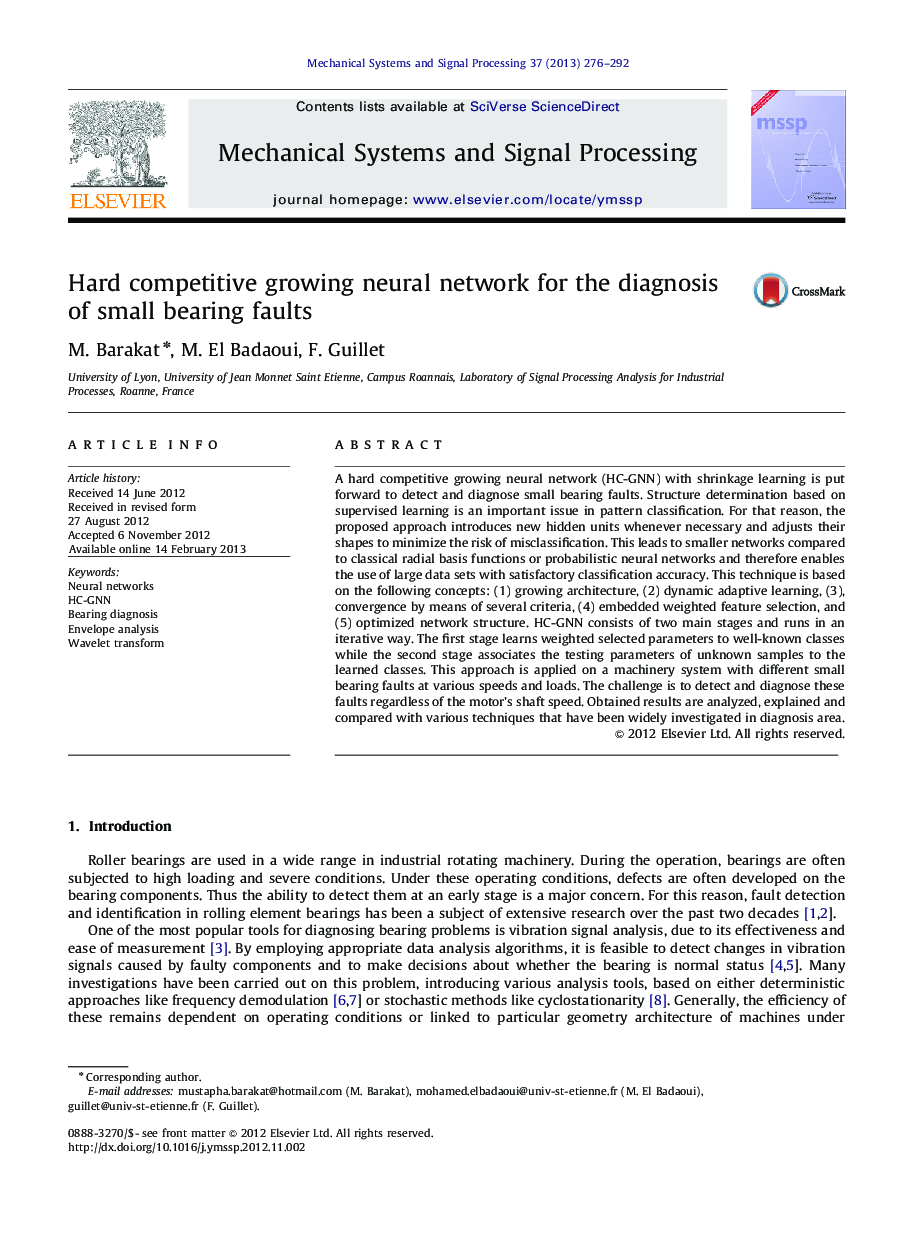| Article ID | Journal | Published Year | Pages | File Type |
|---|---|---|---|---|
| 561271 | Mechanical Systems and Signal Processing | 2013 | 17 Pages |
A hard competitive growing neural network (HC-GNN) with shrinkage learning is put forward to detect and diagnose small bearing faults. Structure determination based on supervised learning is an important issue in pattern classification. For that reason, the proposed approach introduces new hidden units whenever necessary and adjusts their shapes to minimize the risk of misclassification. This leads to smaller networks compared to classical radial basis functions or probabilistic neural networks and therefore enables the use of large data sets with satisfactory classification accuracy. This technique is based on the following concepts: (1) growing architecture, (2) dynamic adaptive learning, (3), convergence by means of several criteria, (4) embedded weighted feature selection, and (5) optimized network structure. HC-GNN consists of two main stages and runs in an iterative way. The first stage learns weighted selected parameters to well-known classes while the second stage associates the testing parameters of unknown samples to the learned classes. This approach is applied on a machinery system with different small bearing faults at various speeds and loads. The challenge is to detect and diagnose these faults regardless of the motor’s shaft speed. Obtained results are analyzed, explained and compared with various techniques that have been widely investigated in diagnosis area.
► A hard competitive growing neural network with shrinkage learning. ► The method is applied on machinery system that operates at various loads and rotational speeds. ► A case of study is made in which different network algorithms are checked out. ► Classification results reveal that the proposed approach offers best classification rates.
